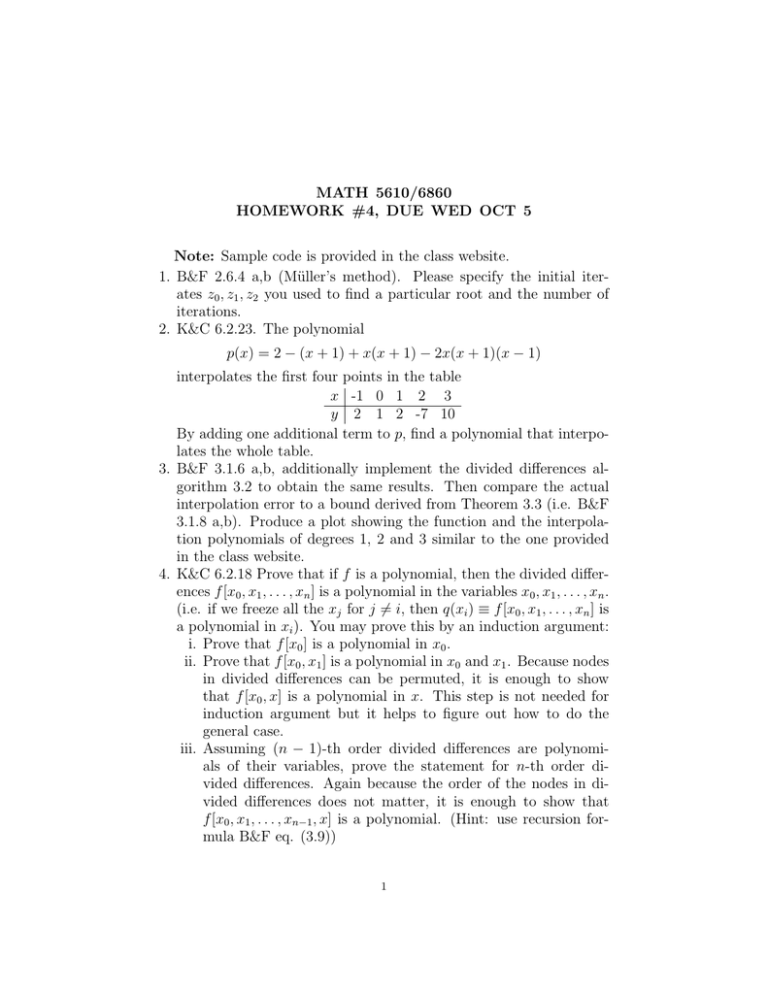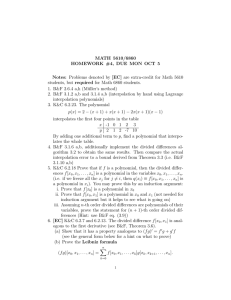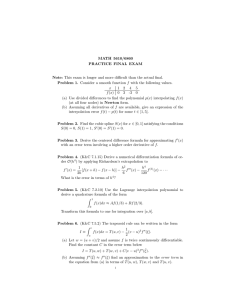MATH 5610/6860 HOMEWORK #4, DUE WED OCT 5
advertisement

MATH 5610/6860 HOMEWORK #4, DUE WED OCT 5 Note: Sample code is provided in the class website. 1. B&F 2.6.4 a,b (Müller’s method). Please specify the initial iterates z0 , z1 , z2 you used to find a particular root and the number of iterations. 2. K&C 6.2.23. The polynomial p(x) = 2 − (x + 1) + x(x + 1) − 2x(x + 1)(x − 1) interpolates the first four points in the table x -1 0 1 2 3 y 2 1 2 -7 10 By adding one additional term to p, find a polynomial that interpolates the whole table. 3. B&F 3.1.6 a,b, additionally implement the divided differences algorithm 3.2 to obtain the same results. Then compare the actual interpolation error to a bound derived from Theorem 3.3 (i.e. B&F 3.1.8 a,b). Produce a plot showing the function and the interpolation polynomials of degrees 1, 2 and 3 similar to the one provided in the class website. 4. K&C 6.2.18 Prove that if f is a polynomial, then the divided differences f [x0 , x1 , . . . , xn ] is a polynomial in the variables x0 , x1 , . . . , xn . (i.e. if we freeze all the xj for j 6= i, then q(xi ) ≡ f [x0 , x1 , . . . , xn ] is a polynomial in xi ). You may prove this by an induction argument: i. Prove that f [x0 ] is a polynomial in x0 . ii. Prove that f [x0 , x1 ] is a polynomial in x0 and x1 . Because nodes in divided differences can be permuted, it is enough to show that f [x0 , x] is a polynomial in x. This step is not needed for induction argument but it helps to figure out how to do the general case. iii. Assuming (n − 1)-th order divided differences are polynomials of their variables, prove the statement for n-th order divided differences. Again because the order of the nodes in divided differences does not matter, it is enough to show that f [x0 , x1 , . . . , xn−1 , x] is a polynomial. (Hint: use recursion formula B&F eq. (3.9)) 1






